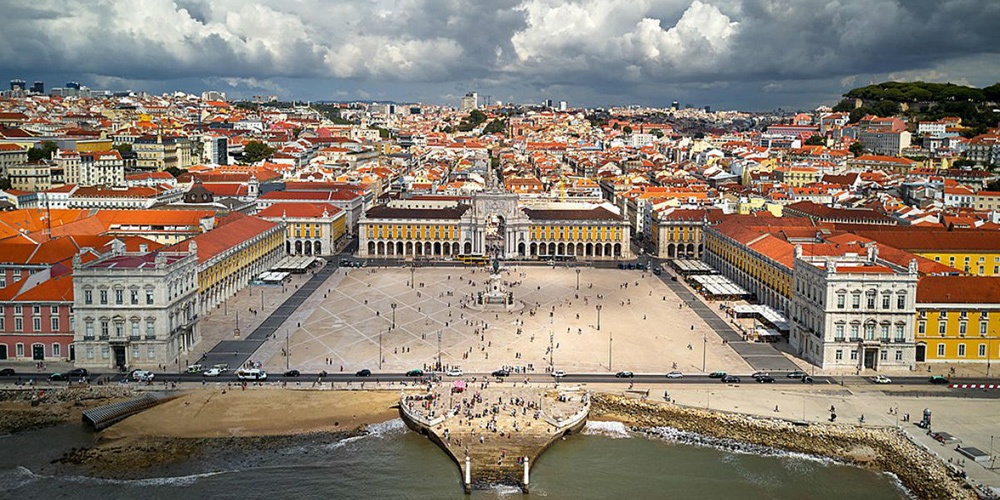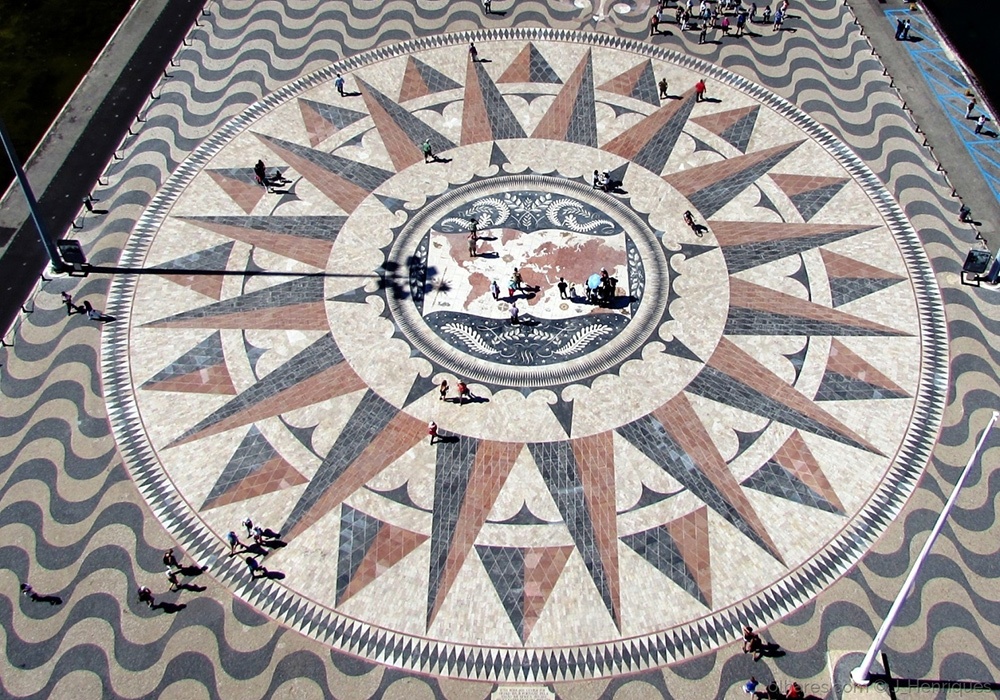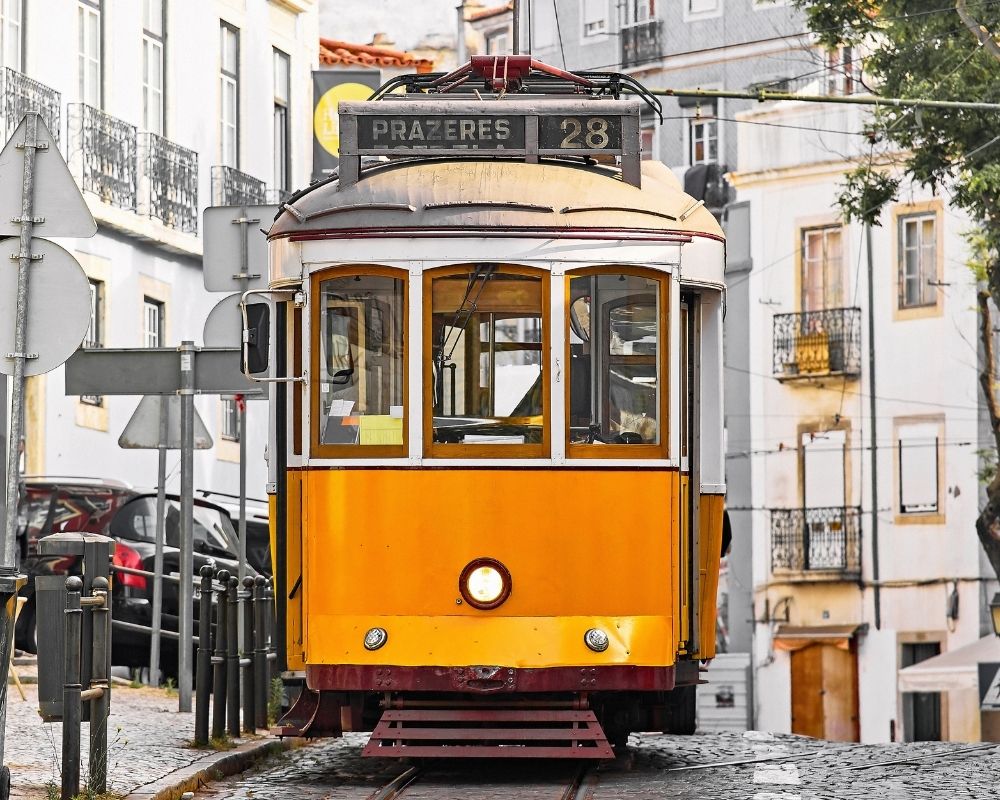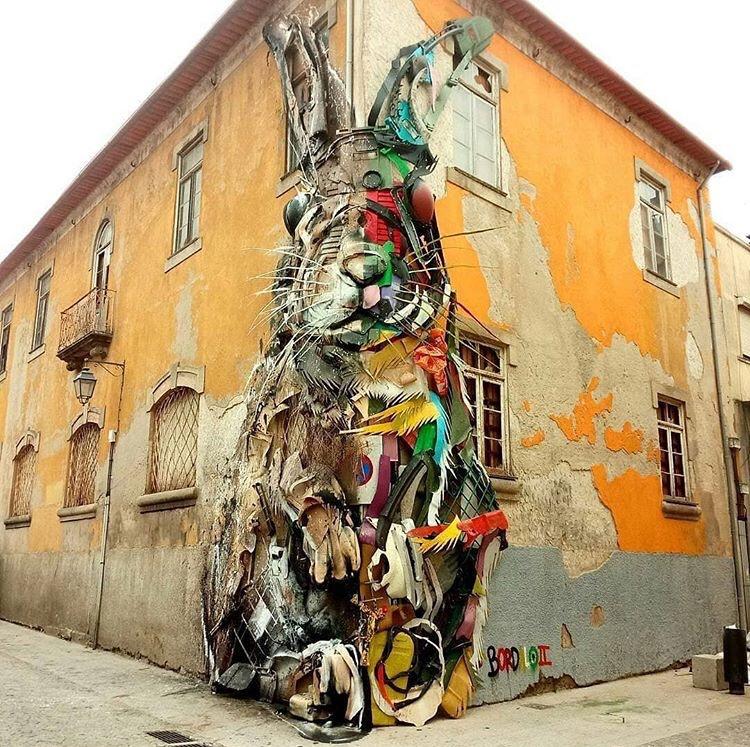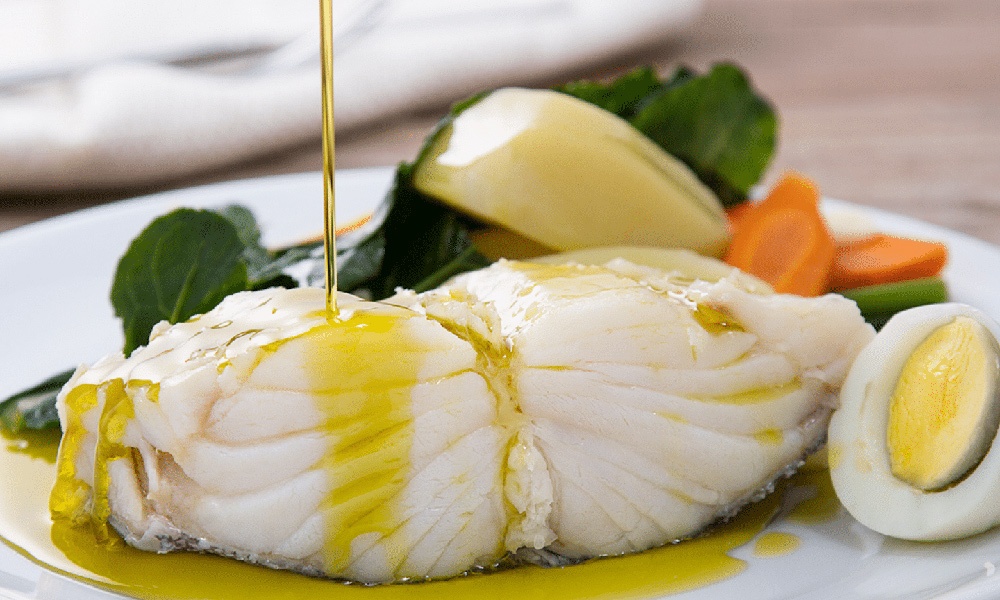As the home of Fado music and colourful cobbled streets, Lisbon has a plethora of exciting secrets that have always enchanted visitors. Effortlessly blending traditional heritage with striking modernism and progressive thinking, it is not surprising that exploring this trendy city will result in a newly found and genuine fascination with one of Europe’s most charismatic and vibrant cities. ~ Eduarda Neves, managing director, Portugal Travel Team
PHOTOS | All photos are courtesy of Portugal Travel Team except image of Belem Tower (top of post) by Tomas Sereda/Canva, and image of yellow tram (#3) by Yasonya/Canva.
 It could all have ended in 1755
It could all have ended in 1755
In the early morning of November 1, 1755, Lisbon was hit by a massive earthquake. A large part of the city was destroyed by this quake. It had a magnitude of 9 on the Richter scale and was followed by a tsunami and several aftershocks, which enabled the ensuing huge fire to last for days. The most affected area was Baixa, Lisbon’s downtown quarter by the river, and the city’s main shopping and banking district. The swift reaction of the King’s Prime Minister at the time and the revolutionary reconstruction of this quarter, with its geometrically designed streets and reinforced building structures, was paramount to the survival of the city. Nowadays, no visit to Lisbon is complete until you stroll down the perfectly aligned streets, with their tiled art deco shop fronts, pastry shops and tailors. The Baroque streets are still named according to the shopkeepers and craftsmen who traded in the area.
 Tiles & Limestone
Tiles & Limestone
Colourful tiles and cobblestones streets are synonymous with Lisbon. Both decorative symbols are deeply entwined in the city’s history, creating a magic atmosphere that will transform your visit into a lifetime experience. Of Muslim origin, the production of tiles in Portugal began in the late 15th century and became a constant feature in Portuguese architecture. There is no other country where you will see them used to such an extent to adorn the interiors and exteriors of houses, churches, palaces and other buildings. Also introduced in the 15th century, black-and-white limestone pavement still covers almost every pedestrian pathway in town with various, whimsical designs. In more recent years, Portuguese cobblestone has been used in some of the most iconic locations around the world—examples include the Calçadão in Rio de Janeiro or the John Lennon Memorial in New York City’s Central Park. Nevertheless, Lisbon remains the best place to admire this unique art.
 One of the most popular attractions used to be called “Americanos”
One of the most popular attractions used to be called “Americanos”
Taking a ride on one of the city’s yellow trams is an iconic Lisbon experience. The trams were modelled on mid-19th century California cable cars. When Lisbon’s first tramway started operating in 1901, it was only natural that the cable cars were called “Americanos.” Today, the yellow trams are still used as public transportation. However, they can be also be privately hired to take you on an unforgettable ride through the city’s hills.
 Street Art
Street Art
Lisbon has a great deal of street art, with walls, floors and buildings demanding your attention. A considerable part of the graffiti was actually commissioned by the city authorities to brighten up some of the city’s dilapidated walls. Take a detour and there’s a good chance you will find the unexpected.
 A Codfish Obsession
A Codfish Obsession
More than a simple traditional dish, codfish or bacalhau is a national obsession. The Portuguese love it so much that there are more than 365 ways to prepare bacalhau—one for each day of the year. What’s interesting is that the fish actually comes from the cold waters off Norway, Iceland and Newfoundland, Canada. As early as the 15th century, during the time of great navigation, when Portuguese sailors travelled the world, they needed food that would not be perishable and that could withstand long journeys. Codfish was discovered near Newfoundland and when dried and salted, it travelled well to Portugal.
 Portugal Travel Team has been helping planners deliver meetings and incentive programs across Portugal since 1996. Its areas of operation include Lisbon & Lisbon Coast, Porto & Douro, the Algarve and Madeira. Portugal Travel Team is represented in Canada by Select Group Marketing.
Portugal Travel Team has been helping planners deliver meetings and incentive programs across Portugal since 1996. Its areas of operation include Lisbon & Lisbon Coast, Porto & Douro, the Algarve and Madeira. Portugal Travel Team is represented in Canada by Select Group Marketing.




